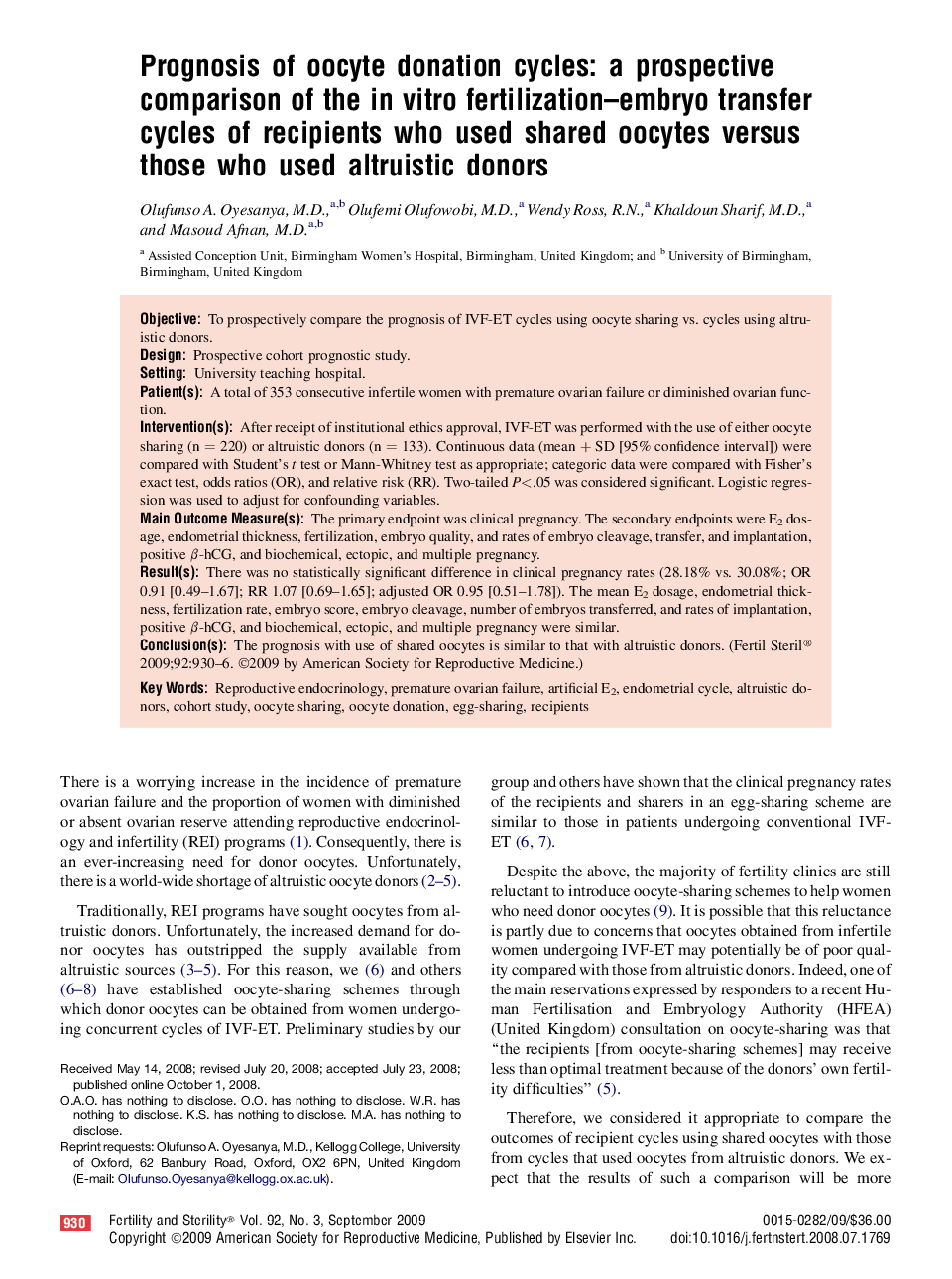| Article ID | Journal | Published Year | Pages | File Type |
|---|---|---|---|---|
| 3933842 | Fertility and Sterility | 2009 | 7 Pages |
ObjectiveTo prospectively compare the prognosis of IVF-ET cycles using oocyte sharing vs. cycles using altruistic donors.DesignProspective cohort prognostic study.SettingUniversity teaching hospital.Patient(s)A total of 353 consecutive infertile women with premature ovarian failure or diminished ovarian function.Intervention(s)After receipt of institutional ethics approval, IVF-ET was performed with the use of either oocyte sharing (n = 220) or altruistic donors (n = 133). Continuous data (mean + SD [95% confidence interval]) were compared with Student's t test or Mann-Whitney test as appropriate; categoric data were compared with Fisher's exact test, odds ratios (OR), and relative risk (RR). Two-tailed P<.05 was considered significant. Logistic regression was used to adjust for confounding variables.Main Outcome Measure(s)The primary endpoint was clinical pregnancy. The secondary endpoints were E2 dosage, endometrial thickness, fertilization, embryo quality, and rates of embryo cleavage, transfer, and implantation, positive β-hCG, and biochemical, ectopic, and multiple pregnancy.Result(s)There was no statistically significant difference in clinical pregnancy rates (28.18% vs. 30.08%; OR 0.91 [0.49–1.67]; RR 1.07 [0.69–1.65]; adjusted OR 0.95 [0.51–1.78]). The mean E2 dosage, endometrial thickness, fertilization rate, embryo score, embryo cleavage, number of embryos transferred, and rates of implantation, positive β-hCG, and biochemical, ectopic, and multiple pregnancy were similar.Conclusion(s)The prognosis with use of shared oocytes is similar to that with altruistic donors.
